Make no mistake, culture of safety means zero patient harm
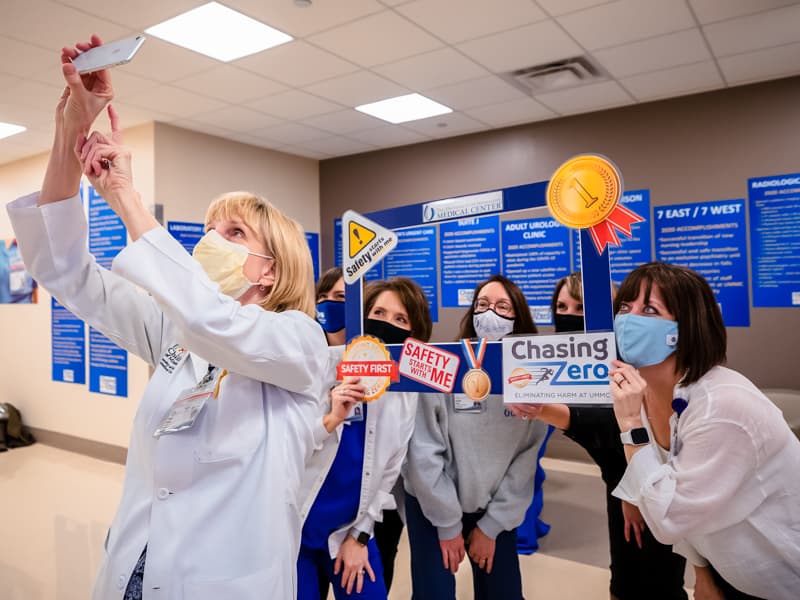
If the University of Mississippi Medical Center cuts by 50 percent the number of times a patient suffers harm after they’re admitted to the hospital, is that good enough?
What about 60 percent? 70 percent?
It’s not OK to have even one safety lapse that causes a patient to suffer harm, be it a fall, an infection or even preventable death. Chasing Zero, the Medical Center’s initiative to eliminate serious safety events affecting patients and to cultivate safer, more effective care, is a proactive approach to achieving zero patient harm – thus, chasing zero.
Chasing Zero, which made its UMMC debut in March 2018, is getting an updated focus for the next 12 months. The new campaign, Chasing Zero: Safety First, kicks off today as part of Patient Safety Week. Activities and incentives through Friday include transforming the University Hospital lobby into an Olympic Village, where medals will be presented daily to front-line staff for exemplary patient safety performance.
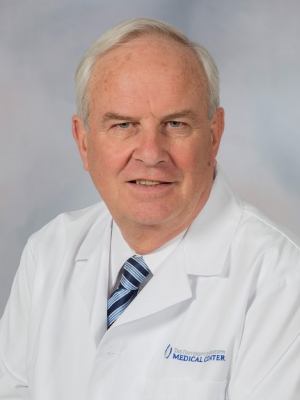
“We needed a refresh,” said Dr. Michael Henderson, UMMC’s chief medical officer. “Safety is one of the three pillars of our journey to becoming a high reliability organization, and Chasing Zero is an important national and international concept of that journey.” The other all-important pillars are leadership and performance improvement. Clinical quality is one of the Medical Center’s top strategic priorities.
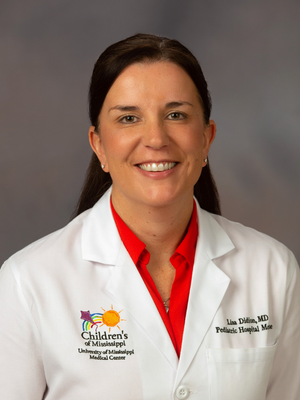
“It’s always good to rejuvenate a safety slogan,” said Dr. Lisa Didion, professor of pediatrics, associate chief medical officer for the Health System and medical director of care coordination.
“We felt it was time to re-engage our front line in understanding the great work that they already do,” Didion said. “We’re celebrating the amazing successes we’ve had in a very crazy year with the pandemic.”
Chasing Zero is modeled after “Zero Patient Harm is Achievable,” an effort championed by The Joint Commission, the nation’s leading accrediting body in health care. Being a high reliability health care organization means consistently giving all patients quality, safe care. UMMC aspires to reach that gold standard through improving its efficiency, effectiveness, processes, customer satisfaction and culture of safety.
Among this week’s activities:
- Wednesday at Wiser Hospital and Friday at the Sanderson Tower, hospital executives will greet employees from 6:30-8 a.m. Employees at the Adult Hospital received a hearty salute this morning.
- Employees can visit the Olympic Village daily from 6-8 a.m. and again from 11 a.m.-1 p.m. and enter to win a prize at a 1 p.m. drawing. The grand prize is a front-row parking spot for the month of April, but more than 150 prizes – the majority of them meals, deserts and drinks donated by Morrison, UMMC’s vendor for food services – will be given away during the week.
- Overhead patient safety announcements will be broadcast at 7 a.m.
- Inpatient and ambulatory units will be recognized daily at 2:30 p.m. in the Olympic Village with gold, silver and bronze medals for their accomplishments in safety metrics that include hospital acquired infections, patient experience and hand hygiene.
The Medical Center in 2015 laid new groundwork for performance improvement when Henderson, a transplant surgeon by trade and national hospital performance expert, was hired from the Cleveland Clinic, where he served as chief quality officer.
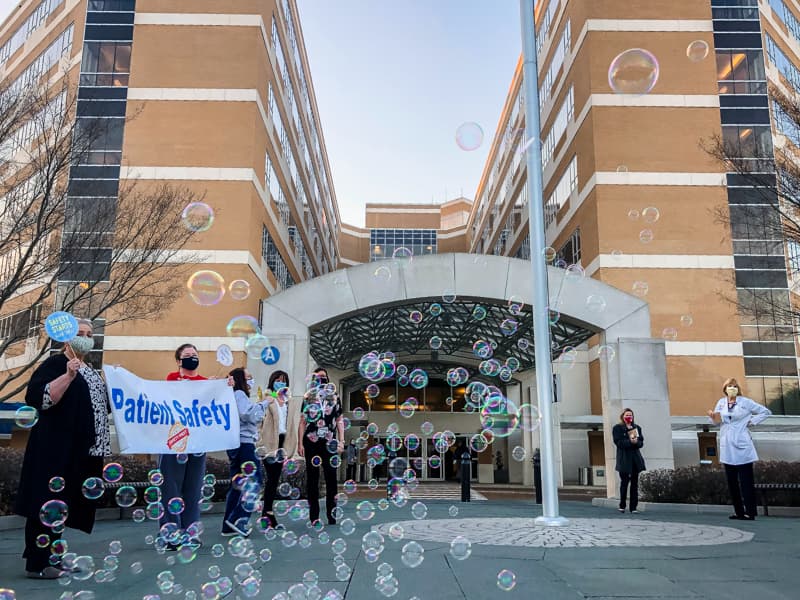
Henderson and his staff work diligently to lead front-line staff and Health System leaders in improving on the safety and experience goals set out on a scorecard found on the UMMC Intranet. The scorecard tracks hospital performance and safety metrics such as hospital acquired infections and pressure injuries; quality metrics such as readmissions and mortality; and both pediatric and adult patient experience.
“As an organization, our top priorities are on the scorecard,” Didion said. “Our message is safety first.”
UMMC must commit to reaching zero patient harm if it hopes to be a high reliability organization, Henderson said. The Medical Center’s progress in improving patient safety scores on a national level shows front-line caregivers are changing the safety culture, he said.
Data on patient safety quality measures is transparently published on the UMMC website.
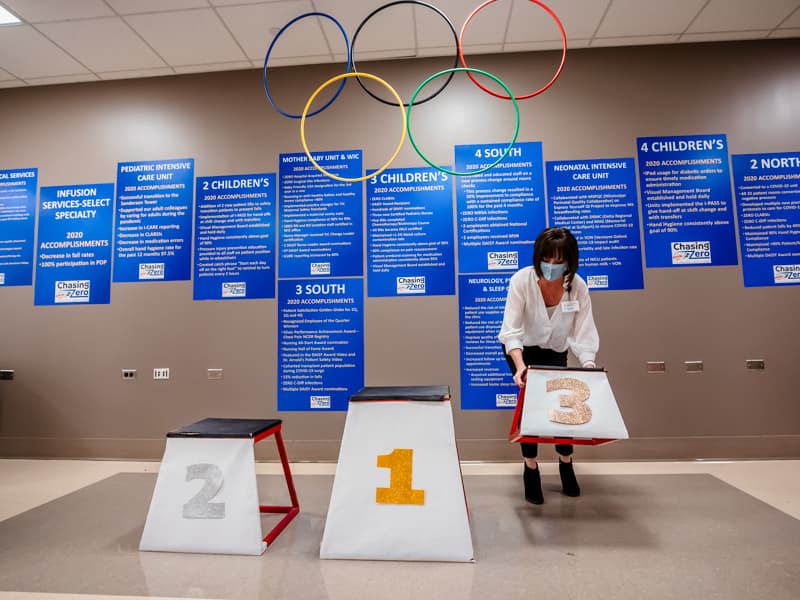
The Leapfrog Group safety grade of A-F and the star rating assigned by the Centers for Medicare and Medicaid, CMS for short, are the most commonly used public metrics for evaluating how safe patients are at the nation’s hospitals. UMMC holds a “C” grade from Leapfrog and has been awarded one star by CMS out of a possible five stars.
The Medical Center’s metrics for both of these rankings improved significantly this past year and put the organization in place to soon jump up to the next level.
Academic medical centers are at a disadvantage over privately run hospitals in the CMS star rating system, because the CMS risk adjustment is inadequate for the most sick and complex patients who end up being treated primarily at academic medical centers. Of 3,600 hospitals rated by CMS, 26 percent have either one or two stars. Among academic medical centers, however, 39 percent have one or two stars.
Chasing Zero: Safety First “is just another reminder that it’s what patients expect when they come through our doors,” Didion said. “Their expectation is that we will keep them safe, that we will heal them, and the final expectation is that we will be kind to them.
“That’s how we should approach our work every day.”


